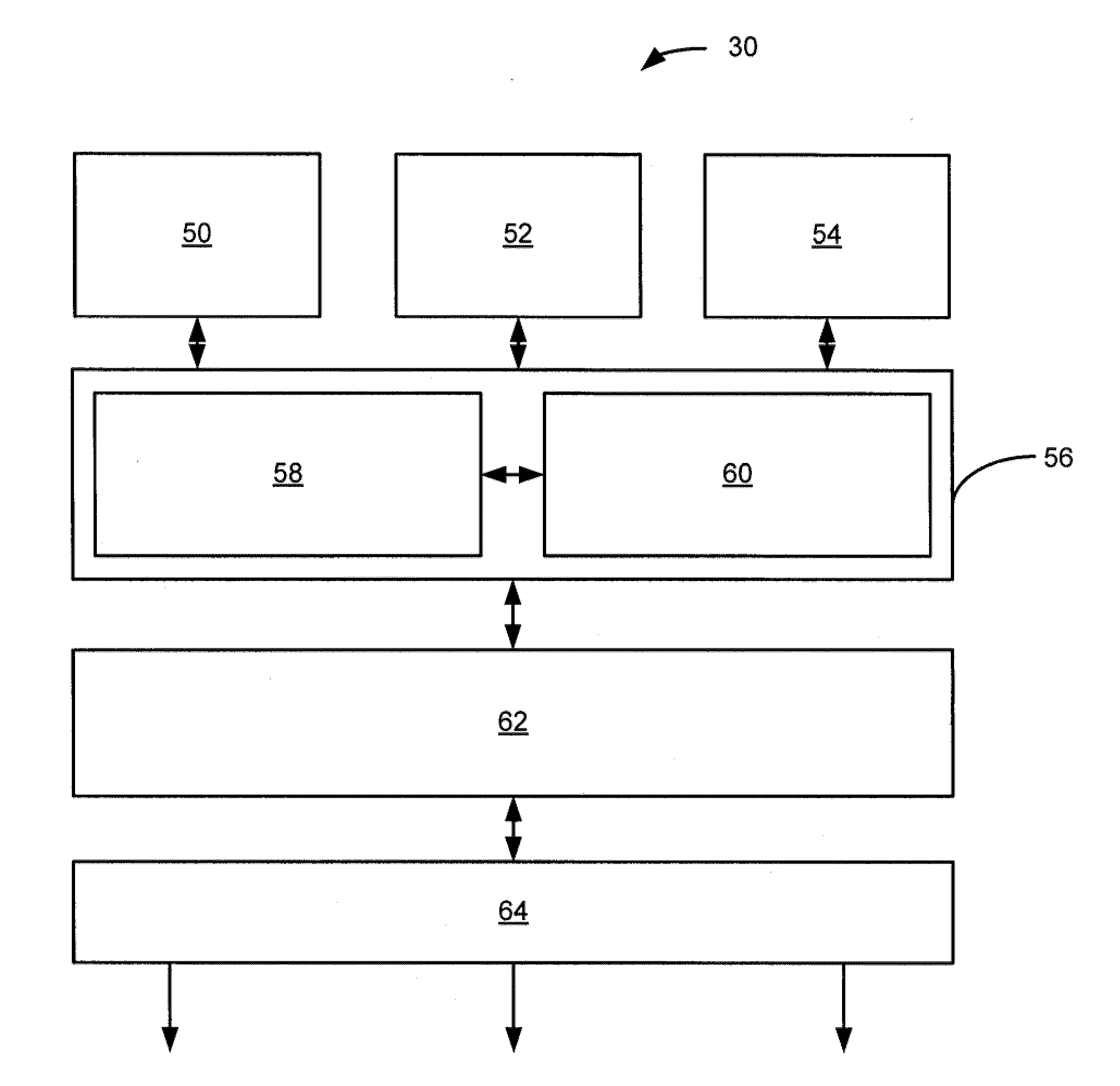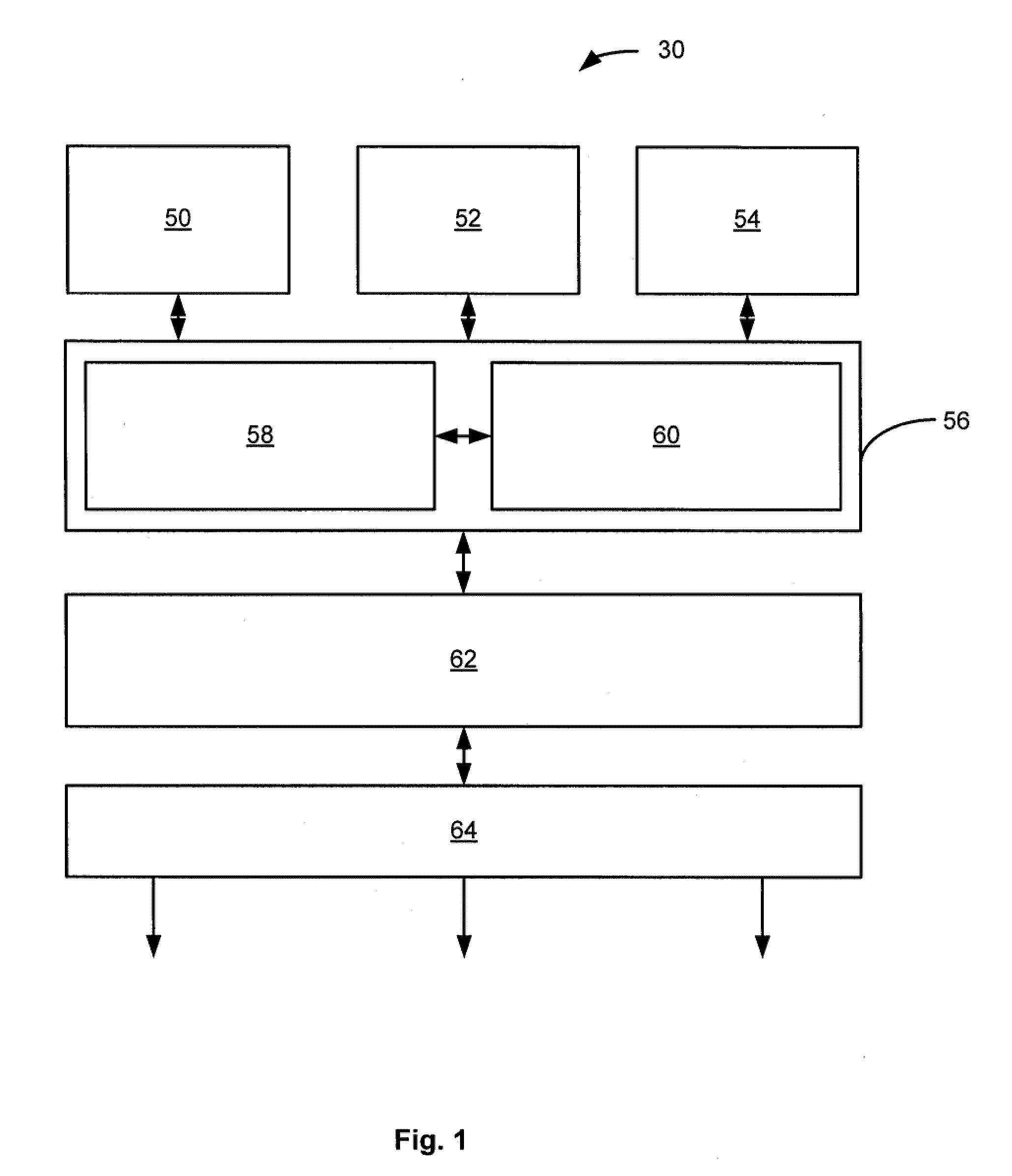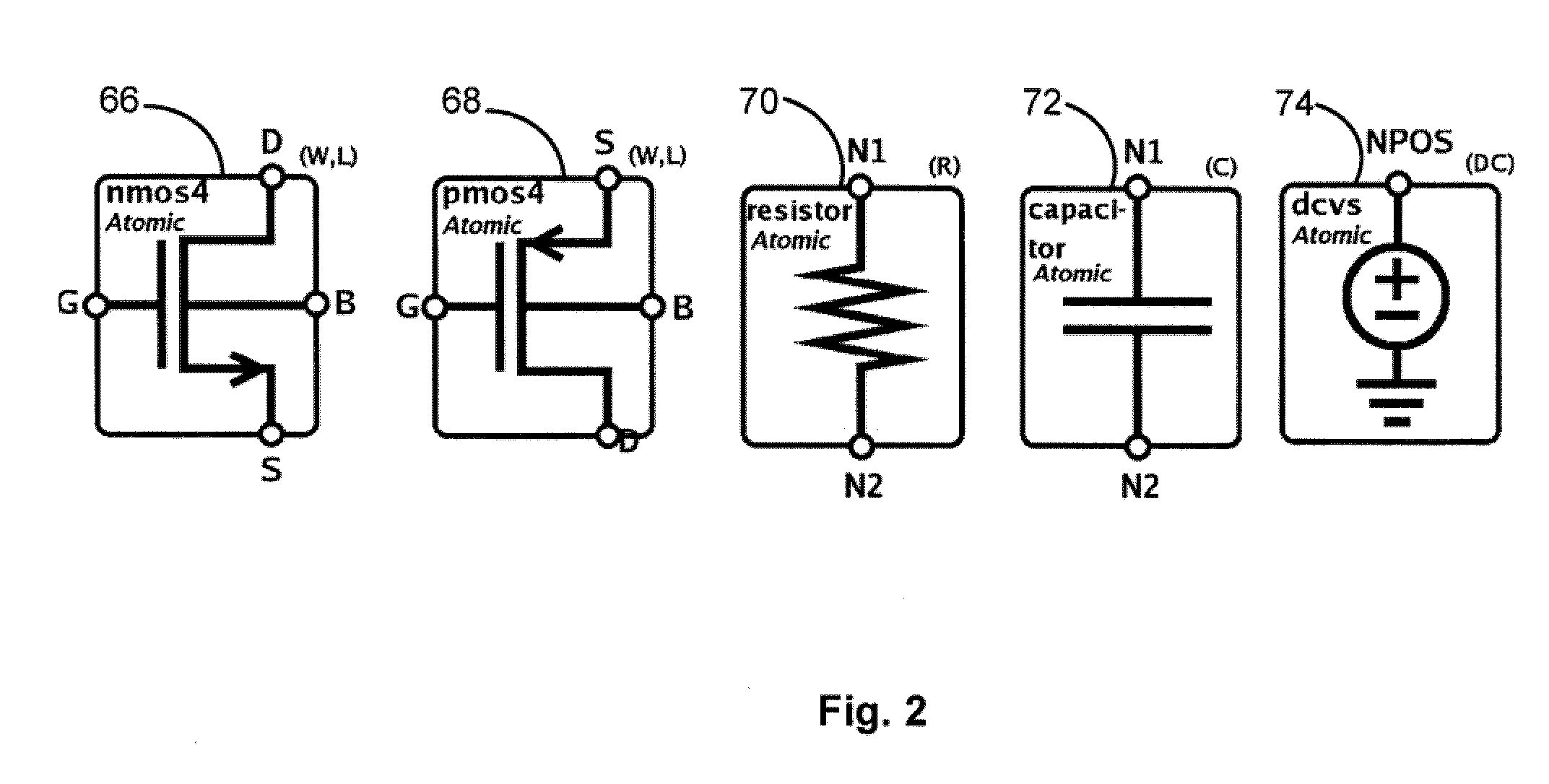Trustworthy structural synthesis and expert knowledge extraction with application to analog circuit design
a technology of expert knowledge and structural synthesis, applied in the field of electrical circuit design, can solve problems such as the inability to guarantee the use of circuit blocks, the inability to solve problems, and the inability to reinvent circuit blocks
- Summary
- Abstract
- Description
- Claims
- Application Information
AI Technical Summary
Benefits of technology
Problems solved by technology
Method used
Image
Examples
Embodiment Construction
[0046]The present disclosure provides a system and method for multi-objective and multi-topology (MOJITO) sizing of multi-variable designs (MVDs), such as, for example, electrical circuit designs (ECDs), or any other suitable design field. The present disclosure also provides a system and method for single-objective and multi-topology sizing of MVDs. Additionally, the present disclosure provides an analog circuit design method that can produce an analog circuit design which is naturally robust to variations without requiring tuning and yet, scales with Moore's Law, i.e., uses the smallest possible transistors.
[0047]FIG. 1 shows an exemplary embodiment of a MOJITO system 30 having as input a building blocks database (BBD) 50 containing a pre-determined set of possible topologies representative of an MVD to be optimized and sized by the system 30. As will be described in detail below, the BBD 50 includes designer-specified, hierarchically organized, building blocks. The building block...
PUM
 Login to View More
Login to View More Abstract
Description
Claims
Application Information
 Login to View More
Login to View More - R&D
- Intellectual Property
- Life Sciences
- Materials
- Tech Scout
- Unparalleled Data Quality
- Higher Quality Content
- 60% Fewer Hallucinations
Browse by: Latest US Patents, China's latest patents, Technical Efficacy Thesaurus, Application Domain, Technology Topic, Popular Technical Reports.
© 2025 PatSnap. All rights reserved.Legal|Privacy policy|Modern Slavery Act Transparency Statement|Sitemap|About US| Contact US: help@patsnap.com



